1. Singh AD, Shields CL, Shields JA. von Hippel-Lindau disease. Surv Ophthalmol. 2001; 46:117–142. PMID:
11578646.

2. Lamiell JM, Salazar FG, Hsia YE. von Hippel-Lindau disease affecting 43 members of a single kindred. Medicine (Baltimore). 1989; 68:1–29. PMID:
2642584.

3. Shields JA, Shields CL. Intraocular tumors: an atlas and textbook. 2nd ed. Philadelphia: Lippincott Williams & Wilkins;2008. p. 368–369.
4. Maher ER, Yates JR, Harries R, et al. Clinical features and natural history of von Hippel-Lindau disease. Q J Med. 1990; 77:1151–1163. PMID:
2274658.

5. Webster AR, Maher ER, Moore AT. Clinical characteristics of ocular angiomatosis in von Hippel-Lindau disease and correlation with germline mutation. Arch Ophthalmol. 1999; 117:371–378. PMID:
10088816.

6. Ridley M, Green J, Johnson G. Retinal angiomatosis: the ocular manifestations of von Hippel-Lindau disease. Can J Ophthalmol. 1986; 21:276–283. PMID:
3801976.
7. Annesley WH Jr, Leonard BC, Shields JA, Tasman WS. Fifteen year review of treated cases of retinal angiomatosis. Trans Sect Ophthalmol Am Acad Ophthalmol Otolaryngol. 1977; 83:OP446–OP453.
8. Singh AD, Damato BE. Clinical ophthalmic oncology: basic principles. Cham: Springer;2019. p. 99–105.
9. Lee DS, Kim YY, Kim SY, Kim SD. Treatment of retinal detachment occurring in two cases of von Hippel-Lindau syndrome. J Korean Ophthalmol Soc. 2001; 42:1636–1640.
10. Baek SK, Jin SY, Lee YH, Lee TG. A case report of primary vitrectomy in multiple bilateral retinal capillary hemangiomas accompanying epiretinal membrane. J Korean Ophthalmol Soc. 2014; 55:928–935.

11. Whitson JT, Welch RB, Green WR. Von Hippel-Lindau disease: case report of a patient with spontaneous regression of a retinal angioma. Retina. 1986; 6:253–259. PMID:
3554423.
12. Oosterhuis JA, Rubinstein K. Haemangioma at the optic disc. Ophthalmologica. 1972; 164:362–374. PMID:
5033057.

13. Sachdeva R, Dadgostar H, Kaiser PK, et al. Verteporfin photodynamic therapy of six eyes with retinal capillary haemangioma. Acta Ophthalmol. 2010; 88:e334–e340. PMID:
20946329.

14. Fong AH, Li KK, Wong D. Intravitreal ranibizumab, photodynamic therapy, and vitreous surgery for the treatment of juxtapapillary retinal capillary hemangioma. Graefes Arch Clin Exp Ophthalmol. 2011; 249:625–627. PMID:
20676670.

15. Kremer I, Gilad E, Ben-Sira I. Juxtapapillary exophytic retinal capillary hemangioma treated by yellow krypton (568 nm) laser photocoagulation. Ophthalmic Surg. 1988; 19:743–747. PMID:
3194109.

16. Gaudric A, Krivosic V, Duguid G, et al. Vitreoretinal surgery for severe retinal capillary hemangiomas in von hippel-lindau disease. Ophthalmology. 2011; 118:142–149. PMID:
20801520.

17. McDonald HR, Schatz H, Johnson RN, et al. Vitrectomy in eyes with peripheral retinal angioma associated with traction macular detachment. Ophthalmology. 1996; 103:329–335. PMID:
8594522.

18. Johnson MW, Flynn HW Jr, Gass JD. Pars plana vitrectomy and direct diathermy for complications of multiple retinal angiomas. Ophthalmic Surg. 1992; 23:47–50. PMID:
1574268.

19. Chew EY, Schachat AP. Capillary hemangioblastoma of the retina and von Hippel-Lindau disease. In : Ryan SJ, editor. Retina. 5th ed. London: Saunders/Elsevier;2013. p. 2156–2163.
20. Lee HJ, Kang SH, Kim HC. Three cases of retinal capillary hemangioma presenting with retinal detachment. J Korean Ophthalmol Soc. 2003; 44:1936–1942.
21. Carr RE, Noble KG. Retinal angiomatosis. Ophthalmology. 1980; 87:956–959. PMID:
7413159.
22. Singh A, Shields J, Shields C. Solitary retinal capillary hemangioma: hereditary (von Hippel-Lindau disease) or nonhereditary? Arch Ophthalmol. 2001; 119:232–234. PMID:
11176984.
23. Hinz BJ, Schachat AP. Capillary hemangioma of the retina and von Hippel-Lindau disease. In : Ryan SJ, Hinton DR, Schachat AP, editors. Retina. 4th ed. St. Louis: Mosby;2006. p. 615–624.
24. Kim HM, Park KH, Woo SJ. Massive exudative retinal detachment following photodynamic therapy and intravitreal bevacizumab injection in retinal capillary hemangioma. Korean J Ophthalmol. 2015; 29:143–145. PMID:
25829835.

25. Schmidt D, Natt E, Neumann HP. Long-term results of laser treatment for retinal angiomatosis in von Hippel-Lindau disease. Eur J Med Res. 2000; 5:47–58. PMID:
10720563.
26. Shields JA. The expanding role of laser photocoagulation for intraocular tumors. The 1993 H. Christian Zweng Memorial Lecture. Retina. 1994; 14:310–322. PMID:
7817024.
27. Lane CM, Turner G, Gregor ZJ, Bird AC. Laser treatment of retinal angiomatosis. Eye (Lond). 1989; 3:33–38. PMID:
2591596.

28. Amoils SP, Smith TR. Cryotherapy of angiomatosis retinae. Arch Ophthalmol. 1969; 81:689–691. PMID:
5781743.

29. Shields JA. Response of retinal capillary hemangioma to cryotherapy. Arch Ophthalmol. 1993; 111:551. PMID:
8470991.

30. Welch RB. Von Hippel-Lindau disease: the recognition and treatment of early angiomatosis retinae and the use of cryosurgery as an adjunct to therapy. Trans Am Ophthalmol Soc. 1970; 68:367–424. PMID:
5535648.
31. Singh AD, Nouri M, Shields CL, et al. Treatment of retinal capillary hemangioma. Ophthalmology. 2002; 109:1799–1806. PMID:
12359597.

32. Watzke RC. Cryotherapy for retinal angiomatosis: a clinicopathologic report. Arch Ophthalmol. 1974; 92:399–401. PMID:
4429468.

33. Los M, Aarsman CJ, Terpstra L, et al. Elevated ocular levels of vascular endothelial growth factor in patients with von Hippel-Lindau disease. Ann Oncol. 1997; 8:1015–1022. PMID:
9402176.

34. Ach T, Thiemeyer D, Hoeh AE, et al. Intravitreal bevacizumab for retinal capillary haemangioma: longterm results. Acta Ophthalmol. 2010; 88:e137–e138. PMID:
19681788.

35. Chelala E, Dirani A, Fadlallah A. Intravitreal anti-VEGF injection for the treatment of progressive juxtapapillary retinal capillary hemangioma: a case report and mini review of the literature. Clin Ophthalmol. 2013; 7:2143–2146. PMID:
24204117.
36. Atebara NH. Retinal capillary hemangioma treated with verteporfin photodynamic therapy. Am J Ophthalmol. 2002; 134:788–790. PMID:
12429270.

37. Rodriguez-Coleman H, Spaide RF, Yannuzzi LA. Treatment of angiomatous lesions of the retina with photodynamic therapy. Retina. 2002; 22:228–232. PMID:
11927862.

38. Suh SC, Jin SY, Bae SH, et al. Retinal capillary hemangioma treated with verteporfin photodynamic therapy and intravitreal triamcinolone acetonide. Korean J Ophthalmol. 2007; 21:178–184. PMID:
17804927.

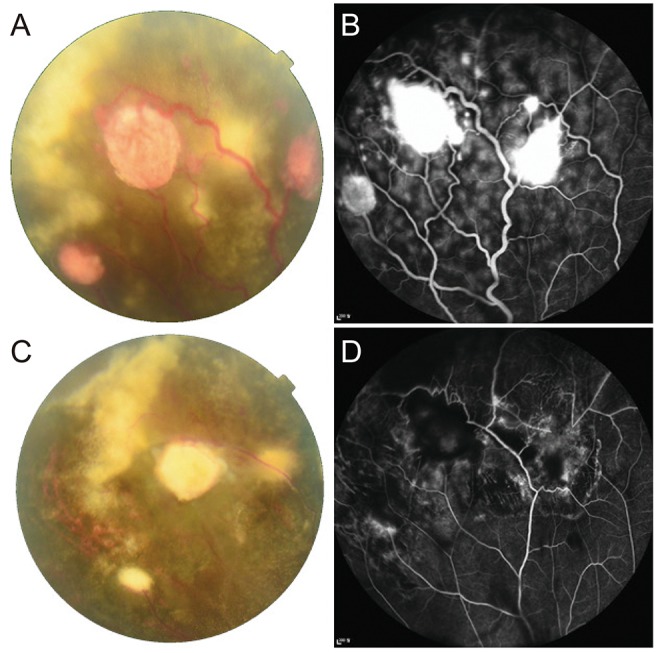
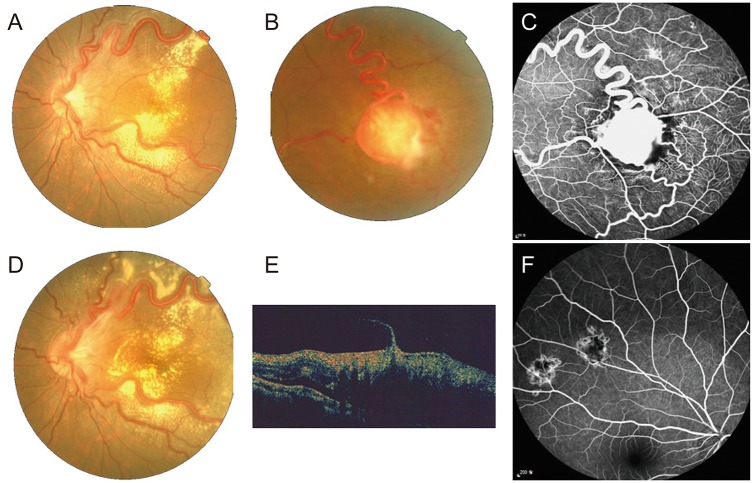
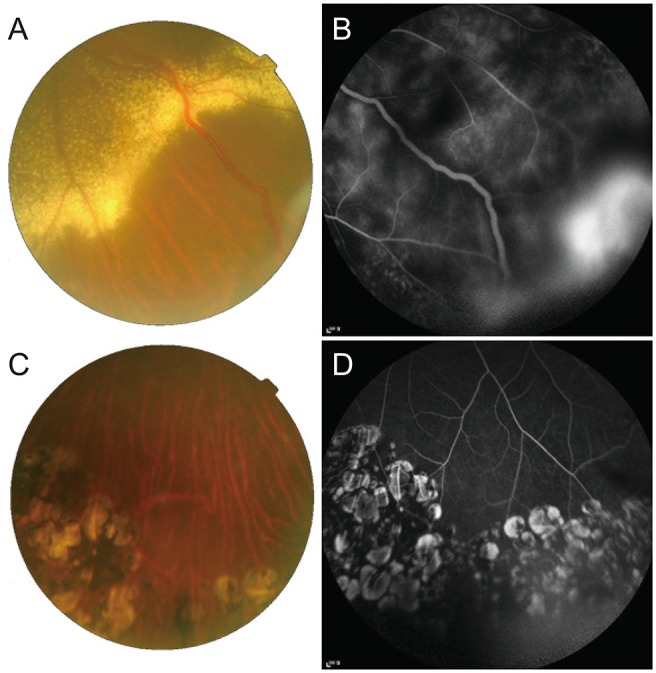

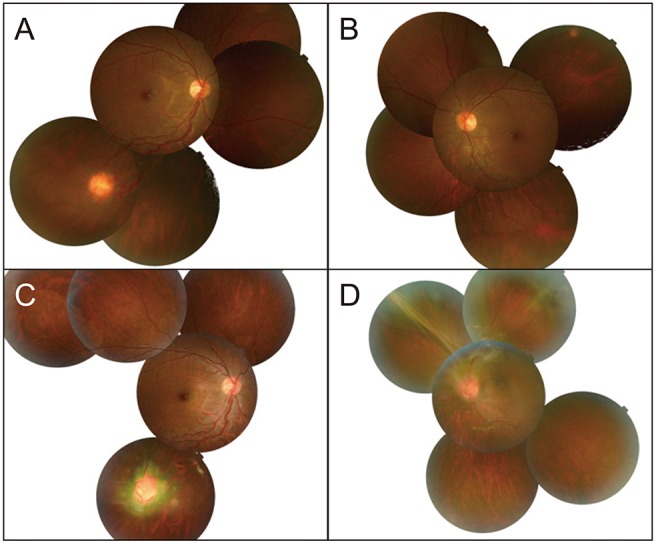




 PDF
PDF ePub
ePub Citation
Citation Print
Print


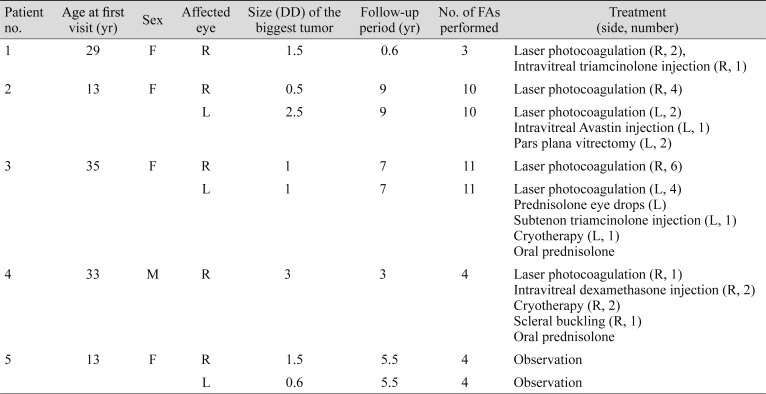
 XML Download
XML Download